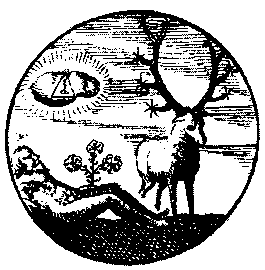Daniel Stolz von Stolzenberg
Daniel Stolz von Stolzenberg (1600–1660) was a notable figure in the realm of alchemy and hermeticism during the 17th century. His work is often associated with the Paracelsian tradition, a school of thought in Renaissance medicine and alchemy that emphasized the healing powers of nature and the importance of obtaining knowledge from the observation of nature, rather than through traditional texts.
Biography[edit | edit source]
Daniel Stolz von Stolzenberg was born in the year 1600, though the exact location of his birth remains unclear. What is known is that he was a part of the broader European intellectual movement that sought to uncover the secrets of nature through alchemy, astrology, and mystical philosophy. His life's work reflects a deep engagement with the Hermetic traditions, which posited that a single, true, and primal wisdom could be found at the heart of all religions and mystical experiences.
Works[edit | edit source]
Stolz von Stolzenberg is best known for his work Viridarium Chymicum, a richly illustrated alchemical text that was published in Frankfurt in 1624. The Viridarium Chymicum is notable for its detailed engravings, which are filled with symbolic imagery meant to convey alchemical and hermetic principles. The work encapsulates the essence of the Paracelsian worldview, emphasizing the unity of the cosmos and the interconnection between the macrocosm and microcosm.
Philosophy[edit | edit source]
Stolz von Stolzenberg's philosophy was deeply influenced by the works of Paracelsus, a Swiss physician and alchemist who challenged the orthodoxies of medieval medicine and science. Stolz von Stolzenberg, like Paracelsus, believed in the concept of the Philosopher's Stone, a legendary substance purported to enable the transmutation of base metals into gold and to cure all forms of illness. His writings suggest a belief in the transformative power of alchemy, not just as a physical practice, but as a spiritual journey towards enlightenment and the perfection of the soul.
Legacy[edit | edit source]
The legacy of Daniel Stolz von Stolzenberg lies in his contribution to the rich tapestry of Renaissance alchemical and hermetic thought. His works, particularly the Viridarium Chymicum, continue to be studied by those interested in the history of science, alchemy, and the esoteric traditions. While modern science has moved beyond the alchemical quest for gold, the symbolic and philosophical underpinnings of Stolz von Stolzenberg's work offer insights into the early modern quest for knowledge and the unification of the spiritual and material worlds.
See Also[edit | edit source]
Search WikiMD
Ad.Tired of being Overweight? Try W8MD's physician weight loss program.
Semaglutide (Ozempic / Wegovy and Tirzepatide (Mounjaro / Zepbound) available.
Advertise on WikiMD
|
WikiMD's Wellness Encyclopedia |
| Let Food Be Thy Medicine Medicine Thy Food - Hippocrates |
Translate this page: - East Asian
中文,
日本,
한국어,
South Asian
हिन्दी,
தமிழ்,
తెలుగు,
Urdu,
ಕನ್ನಡ,
Southeast Asian
Indonesian,
Vietnamese,
Thai,
မြန်မာဘာသာ,
বাংলা
European
español,
Deutsch,
français,
Greek,
português do Brasil,
polski,
română,
русский,
Nederlands,
norsk,
svenska,
suomi,
Italian
Middle Eastern & African
عربى,
Turkish,
Persian,
Hebrew,
Afrikaans,
isiZulu,
Kiswahili,
Other
Bulgarian,
Hungarian,
Czech,
Swedish,
മലയാളം,
मराठी,
ਪੰਜਾਬੀ,
ગુજરાતી,
Portuguese,
Ukrainian
WikiMD is not a substitute for professional medical advice. See full disclaimer.
Credits:Most images are courtesy of Wikimedia commons, and templates Wikipedia, licensed under CC BY SA or similar.
Contributors: Prab R. Tumpati, MD

